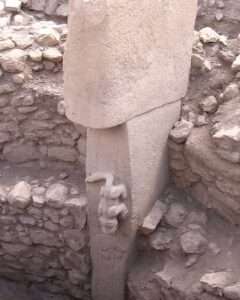Nestled in the hills of southeastern Turkey, Göbekli Tepe stands as a remarkable archaeological marvel that is reshaping our understanding of early human civilizations. With origins dating back approximately 12,000 years ago, this ancient site predates iconic structures like Stonehenge and the Egyptian pyramids by millennia, cementing its status as the oldest known temple complex in existence.
At the heart of Göbekli Tepe lie its awe-inspiring T-shaped limestone pillars, some towering over 5 meters high, showcasing unparalleled craftsmanship and artistic prowess. Adorned with intricate carvings of diverse animals such as lions, snakes, birds, and a striking lizard, these pillars bear testament to the exceptional skills and symbolic depth of its ancient builders.

What sets Göbekli Tepe apart are its profound implications for human history. Contrary to conventional wisdom, researchers believe that this site was constructed before the advent of agriculture, indicating that its creators were likely hunter-gatherers rather than settled farmers. This groundbreaking perspective challenges existing notions, suggesting that sophisticated religious or ceremonial sites like Göbekli Tepe could have played a pivotal role in the transition to agricultural practices and the establishment of permanent settlements, rather than being a consequence of these developments.
The exact purpose of Göbekli Tepe remains a subject of ongoing scholarly discourse. Many speculate that it served as a gathering place for religious or ceremonial activities, symbolizing the communal spirituality of early human societies. The unearthing of this extraordinary site not only showcases the advanced abilities of prehistoric cultures but also prompts a reassessment of the origins of human civilization, spirituality, and architectural ingenuity. Göbekli Tepe captivates researchers worldwide, offering a captivating glimpse into a largely overlooked epoch of our ancient past.
In conclusion, Göbekli Tepe stands as a testament to the creativity and sophistication of our earliest ancestors. Its existence challenges long-held beliefs about the capabilities of ancient societies and sheds new light on the intricacies of human development. As excavations and research at Göbekli Tepe continue to unfold, one thing remains certain: this enigmatic sanctuary holds the key to unlocking the mysteries of our shared human heritage.





